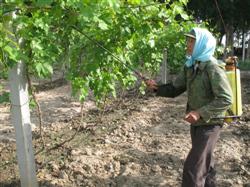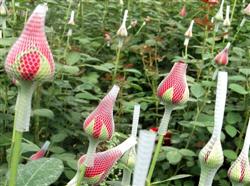How do crops use growth regulators?

How do crops use growth regulators? Please introduce the use of growth regulators can refer to the following methods: 1, combined with cultivation measures. Plant growth regulator is not a nutrient, it can only regulate plant growth and development, can not replace the demand for temperature, light, water and fertilizer, nor can it replace the normal metabolism of plants, so it can not be separated from normal cultivation measures. 2. Choose the medicine correctly and use the medicine to the symptom. Plant growth regulators can be divided into inhibitory type and promotive type, and each agent has different characteristics and physiological functions. Therefore, the effects of various agents must be fully understood before use, and the applicable agents must be selected according to the purpose of application and the expected results. 3. Correctly grasp the concentration and dosage. Rice is sensitive to hormone chemicals, and the expected effect can be obtained in the range of suitable concentration and dosage. If the concentration is low or the dosage is small, the effect is not significant, but if the concentration and dosage exceed the appropriate range, it will have the opposite effect. Even rice suffers death. 4. Master the period, frequency and location of pesticide application. The application of the same growth agent in different growth stages of crops will produce different effects. If gibberellin is applied before tillering, it can promote tillering, and when applied at the peak or late tillering stage, it has an inhibitory effect on tillering. The practice shows that the effect of hormone application in small dose is better than that in high dose, and some single growth period is not as good as multi-stage application. 5. pay attention to the influence of PH. For example, ethephon does not release ethephon stable below PH3, but begins to release ethylene above PH4.1, so it is not suitable to be mixed with alkaline agents. The PH of different water quality is also different, so hard water (well water) should not be used in dispensing, so as not to affect the efficacy of insoluble calcium salt and magnesium salt. 6. Apply and mix correctly. Practice has proved that promotive and inhibitory plant growth agents, or mixed with chemical fertilizers and pesticides, can improve the effect as long as they are properly matched, and if the mixed application produces antagonistic effect, they will counteract each other and reduce the effect. Some hormones can be mixed with chemical fertilizers and pesticides, some can not be mixed, and most alkaline fertilizers and pesticides fail and cannot be mixed. Click to get more regulator application techniques click to get more pesticide application techniques
- Prev

What should we pay attention to when using plant growth regulators?
What should we pay attention to when using plant growth regulators? Please guide plant growth regulators have been widely used in grain, cotton, fruit, vegetable crops, often due to improper use resulting in poor effect or frequent occurrence of diseases. Therefore, when using plant growth regulators, we should pay attention to the following points:.
- Next

How to plant roses scientifically?
How to plant roses scientifically? Please give guidance on rose planting can refer to the following methods: 1. Variety layout: Meilan lipstick and Bellamy are the main varieties in summer, and American powder can be used as summer or autumn and winter varieties. Cardinal and Hongjiu ○ are the main varieties in autumn and winter. 2, the planting period and.
Related
- Fuxing push coffee new agricultural production and marketing class: lack of small-scale processing plants
- Jujube rice field leisure farm deep ploughing Yilan for five years to create a space for organic food and play
- Nongyu Farm-A trial of organic papaya for brave women with advanced technology
- Four points for attention in the prevention and control of diseases and insect pests of edible fungi
- How to add nutrient solution to Edible Fungi
- Is there any good way to control edible fungus mites?
- Open Inoculation Technology of Edible Fungi
- Is there any clever way to use fertilizer for edible fungus in winter?
- What agents are used to kill the pathogens of edible fungi in the mushroom shed?
- Rapid drying of Edible Fungi

